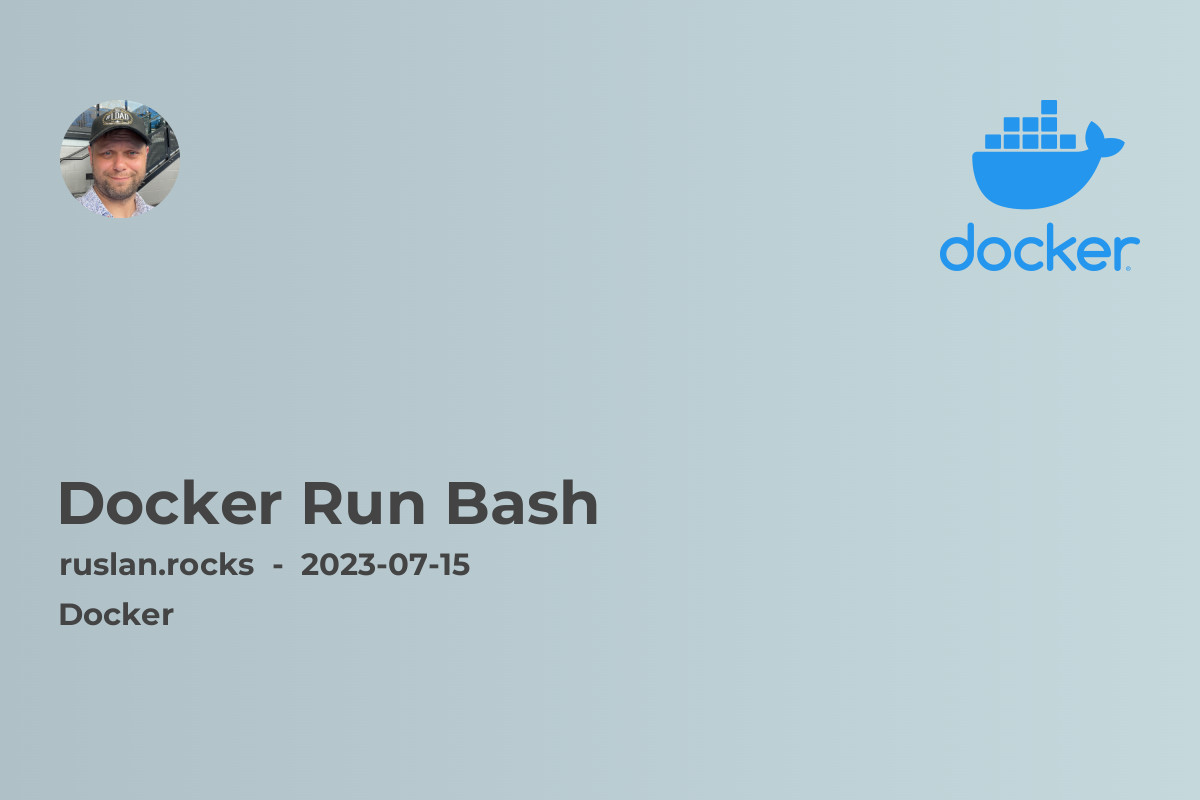- Running Bash with docker run
- Benefits of Running Bash in Docker Containers
- Running Bash in Docker Compose
- Running Bash in Interactive Mode
- Running Bash in Detached Mode
- Running Bash in Existing Containers

Running Bash commands within Docker containers is a fundamental task for developers and system administrators.
Running Bash with docker run
To run Bash in a Docker container, the most commonly used method is the docker run command. This command allows you to specify the image to run and the command to execute inside the container. For example, to run Bash in an Ubuntu container, you can use the following command:
docker run -it ubuntu bash
In this command, the -it option is used to allocate a pseudo-TTY and keep stdin open, allowing interaction with the container's shell. The ubuntu argument specifies the base image, and bash is the command to be executed. Once executed, you will be dropped into a Bash shell within the container.
Benefits of Running Bash in Docker Containers
Running Bash in Docker containers offers several advantages:
-
Isolation: Docker containers provide a lightweight and isolated environment for running applications. By running Bash commands in containers, you can prevent conflicts with the host system and other applications.
-
Reproducibility: Docker allows you to package your application and its dependencies into a single container image. This makes it easy to share and deploy your application consistently across different environments.
-
Portability: Docker containers can run on any system that supports Docker, making it easy to move your application between development, staging, and production environments.
-
Scalability: Docker containers can be easily scaled up or down based on the demand for your application. By running Bash commands within containers, you can manage your application's scaling needs efficiently.
-
Version Control: Docker images can be version-controlled, enabling you to track changes, rollbacks, and collaborate with other team members effectively.
Running Bash in Docker Compose
Docker Compose is a powerful tool for defining and running multi-container Docker applications. It allows you to define your application's services, networks, and volumes in a YAML file, making it easier to manage complex environments.
To run Bash in a Docker container using Docker Compose, you can define a service with the desired image and command. Here's an example docker-compose.yml file:
version: '3'
services:
myapp:
image: ubuntu
command: bash
With this configuration, you can run the following command to start the container:
docker-compose up -d
Running Bash in Interactive Mode
Interactive mode is often preferred when running Bash in Docker containers because it allows direct interaction with the container's shell. To run Bash in interactive mode, use the following command:
docker run -it ubuntu bash
In interactive mode, you can execute multiple commands interactively and see the output in real-time.
Running Bash in Detached Mode
Detached mode, also known as background mode, allows you to run a container in the background and detach from its console. This mode is particularly useful when running long-running processes or servers. To run Bash in detached mode, use the following command:
docker run -d ubuntu bash -c "while true; do echo 'Hello, Docker!'; sleep 1; done"
This command runs an Ubuntu container with a Bash command that continuously echoes "Hello, Docker!" every second. The container runs in the background, and you can check its output using the docker logs command.
Running Bash in Existing Containers
If you have an existing running container and want to run Bash commands inside it, you can use the docker exec command. This command allows you to execute a command in a running container's shell. Here's an example:
docker exec -it <container-id> bash
In this command, <container-id> is the ID or name of the container in which you want to run Bash commands. This method is particularly useful for troubleshooting or making changes inside a running container.
Running Bash commands in Docker containers is a vital skill for anyone working with Docker. It provides a secure and isolated environment for running and managing applications. In this article, we explored various methods to run Bash in Docker containers, including using the docker run command, Docker Compose, interactive mode, detached mode, and docker exec. By utilizing these methods, you can effectively leverage the power of Docker to enhance your development and deployment workflows.
Related Articles:
- What Is Docker Compose: Learn about Docker Compose and how it simplifies multi-container application deployments.
- Introduction To Containerization: Gain a foundational understanding of containerization and its significance in modern software development.
- Docker Container Logs: Explore different techniques for accessing and analyzing container logs in Docker.
- Managing Microservices With Docker Swarm And Kubernetes: Dive into the concepts of Docker Swarm and Kubernetes for managing microservices at scale.
- Docker Install Mac: Find step-by-step instructions for installing Docker on a Mac machine.
Remember, running Bash in Docker containers provides flexibility, scalability, and efficiency for your development and deployment workflows. Start exploring the power of Docker today!

